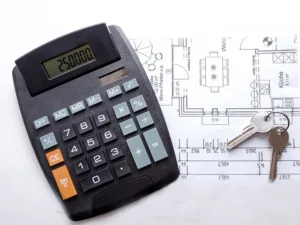Mastering construction progress reporting is essential for on-time and on-budget project delivery. Our guide simplifies the process, helping you develop reports that keep your construction project transparent and all parties accountable.
Table of Contents
Key Takeaways
Construction progress reports serve as a critical tool for aligning the efforts of stakeholders and tracking the project’s milestones, material usage, and labor on a daily, weekly, or monthly basis.
Effective progress reporting relies on clear, concise information structured into easily digestible summaries with visual aids, and it’s essential for communication, decision-making, and maintaining harmony among all team members.
Leveraging templates, digital tools, and 360° monitoring can streamline the reporting process, enhance accuracy, facilitate historical data analysis, and provide legal and warranty protection.
The Essentials of Construction Progress Reporting

In the bustling world of construction, progress reports act as the heartbeat of any project, aligning the symphony of machines, materials, and manpower. These documents are the silent overseers of construction sites, providing a panoramic view of the project’s progress—capturing triumphs, setbacks, and the daily grind.
Each report allows project managers and stakeholders to align their efforts, guiding the project’s progress closer to its anticipated completion.
Defining a Construction Progress Report
A construction progress report is akin to a daily diary entry of the construction site, encapsulating the day’s labor and milestones within its pages. It’s an anthology of the site’s saga, including:
Weather conditions
Crew work logs
Material tallies
Any unexpected guests or events that left an imprint on the day
The site supervisor, who pens this narrative, holds the responsibility to create accurate and comprehensive chronicles, offering a dependable reference for all involved stakeholders.
The Role of a Project Manager in Reporting
Project managers, akin to conductors in the construction projects, harmonize the weekly rhythm of status reports, each element carefully synchronized with the project’s overarching objectives. They set the tone, defining the aims of these reports—be it to celebrate the cresting of milestones or to conduct incisive monthly reviews.
In the technical crescendos and significant initiatives, their collaboration with the ensemble of team members is pivotal, ensuring that every instrumentalist—the stakeholders—plays in harmony.
Aligning Reports with Project Goals
To maintain the concordance between the project’s score and its performance, reports must frequently mirror the original composition—comparing the current progress with the envisioned plan. Visuals, such as charts and graphs, serve as the clefs and notes, translating the project’s tempo for all to comprehend.
This alignment acts as a guide, confirming that the project’s progress aligns with its intended pace, ensuring everyone is on the same page.
Crafting an Effective Status Report

A meticulously crafted status report is pivotal for triumphant project management, characterized by:
Clear, concise, and precise information
High-level summary that captures the project’s crescendo
Major achievements
Critical milestones
Pressing issues demanding the spotlight
These periodic snapshots are not mere formalities; they are the strategic pauses in the project’s composition that align the tempo and attune all those involved to the project’s rhythm.
Key Components of a Status Report
In the ensemble of a construction project, a status report serves as the playbook, showcasing the project’s current status, accomplished work, and the ebbs and flows of faced challenges. Visual aids such as graphs and charts are the visual motifs that render complex data into harmonious insights.
As the plan unfolds, it also forecasts future tasks, outlining their structure, deadlines, and the responsible individuals for their execution. This proactive narrative allows stakeholders to foresee the project’s trajectory, tuning their expectations to the reality of the progress.
Tracking Materials and Equipment
In the concert of construction, materials and equipment are key players—each arrival and departure must be precisely tracked to maintain the project’s smooth operation. The status report’s ledger records the cadence of deliveries and juxtaposes the material status against the timeline of the project, ensuring that no beat is missed.
The machinery’s operatic solos—operational hours and status—are monitored, contributing to the harmonious interplay between resources and deadlines.
Daily Reporting Best Practices
Daily reports act as the concise, precise, and crucial log entries in the narrative of the project’s progress. These daily logs capture the essence of the project’s activities, ensuring not a single day’s labor fades into obscurity, and setting the stage for the following day’s performance.
Structured naming conventions and date and time stamps are the metronomes of these documents, providing a verifiable tempo for the records.
Importance of Daily Documentation

Daily documentation is the crucial component of the construction reporting process—highlighting effective communication, improving project execution, and sticking to predetermined schedules and budgets. Every detail, from the roster of crew members to the symphony of machinery and the whims of the weather, is documented to provide a comprehensive recapitulation of the day’s work. Safety details and incidents are not mere footnotes; they are the critical measures that ensure the opus of construction adheres to the highest standards and remains in compliance with regulatory guidelines.
Modern tools, like 360° monitoring, capture the site in its entirety, making daily reports a tangible testament to progress.
Streamlining the Daily Report Process
An efficient daily report ensures that each section—grouped by supervisor, shift, or location—provides detailed information and simplifies the broader project management process. When the daily documentation is systematized, the melody of progress is harmonious, uninterrupted by dissonance or confusion.
Utilizing Templates and Tools for Progress Reports

In the creation of construction documentation, templates and digital tools are the facilitators that streamline the reporting process. With their utilization, the melody of accuracy is enhanced, and the chance of human error—like a flawed note—is greatly reduced.
Automation in data collection is like an ensemble playing in perfect unison, ensuring real-time updates and reliable records that resonate with the truth of the project’s progress.
Benefits of Report Templates
Templates streamline the construction reporting process, saving teams from the complexities of drafting reports from scratch and ensuring consistent documentation across all projects. These blueprints of information capture the symphony of progress in a format that is both familiar and comprehensive, allowing for a seamless continuation of the project’s narrative.
Digital Solutions for Construction Reporting
The advent of digital technology has revolutionized construction reporting, offering tools for creating detailed PDF reports and integrating BIM tools for a comprehensive view of the project. Financial reporting, too, finds a new rhythm with solutions like Buildertrend, enhancing project estimations and expense management with a precision that was once hard to achieve.
The archival of these digital reports in searchable databases is the crescendo of this evolution, simplifying the review of historical data and aiding in the composition of future projects with greater accuracy.
Monitoring Weather Conditions and Their Impact
Weather is an unpredictable factor that can dramatically change the pace of construction projects. From the gentlest breeze to the fiercest storm, weather conditions can introduce unexpected interludes of delays and increased costs. Lightning, with its perilous potential, can halt the site’s concerto, especially when tall metal structures reach towards the sky.
When the skies weep for extended periods, the very ground may lose its stability, disrupting the tempo of activities such as concrete pouring. And when the wind decides to conduct its own performance, operations at height, particularly those involving cranes, must be postponed, adhering to the strict measures of safety.
Documenting Weather-Related Delays

With the virtuosity of a 360° monitoring system, the impact of weather on the construction site is captured and documented with panoramic precision, providing a historical record that is as detailed as it is location-specific. Access to historical weather data is like a time machine, allowing for the substantiation of delays and offering insights into the true impact of the elements on the project’s timeline.
These records become part of the project’s legacy, informing future compositions with realistic expectations and proactive contingency planning.
Regular Inspection Reports: Safety and Compliance
As the construction project progresses, regular inspection reports are crucial in maintaining safety and compliance on site. Safety officers and site managers, like vigilant composers, utilize these reports to orchestrate the implementation of safety measures, maintaining a cadence that adheres to contractual and regulatory compositions.
The integrity of the site’s structures and equipment is evaluated with a discerning eye, ensuring the safety of the performance space and its performers.
Conducting and Recording Inspections
The inspection report encompasses a range of safety measures—electrical, fire, and general safety—like a checklist of critical notations ensuring the performance adheres to the safety standards and regulations.
The punch list report, summarizing tasks that still need attention, is essential to ensure the project’s completion meets the contractual specifications. This report serves as a reminder of the unfinished measures that must be addressed, ensuring the last notes of the project’s symphony are in perfect tune.
Addressing Issues Identified in Inspections
Resolving the punch list is the contractor’s final hurdle, requiring completion of all remaining tasks to the highest standards before the project can be deemed complete. The contractor’s role is to ensure each item is addressed thoroughly and harmoniously, as any unresolved issues may lead to an extended intermission, delaying the project’s grand finale and the final remuneration for their performance.
The completion of the punch list is the conclusive cadence, the prerequisite for the closing curtain and the final payment.
Communicating with Stakeholders Through Reports
Communicating the project’s progress to stakeholders is as critical as a script in an opera—each report needs to be customized to their unique roles and expectations, guaranteeing clear and strategic information dissemination. The frequency of updates, like the tempo of a musical piece, should be established in concert with the owner and architect, ensuring all stakeholders are attuned to the project’s pace.
Templates for progress reports are the staves on which the notes of communication are inscribed, enabling regular and engaged conversation.
Tailoring Reports to Different Audiences
Understanding the audience is key in any performance, and stakeholder analysis is instrumental for tailoring the narrative of progress reports. Each group, from financiers to subcontractors, requires a different lens through which to view the project’s progress. The content, frequency, and format—be it a dashboard for a quick overview or a detailed memo for in-depth analysis—must be customized to meet the specific needs of these varied audiences without overwhelming them with a cacophony of irrelevant details.
The use of visual aids, developed with the expertise of the project team, can significantly enhance the clarity of these reports, ensuring that all stakeholders can follow the project’s narrative with ease.
Enhancing Collaboration with Clear Reporting
Clear reporting is the harmony that fosters collaboration, providing a conduit for efficient communication and ensuring that every team member is in tune with the project’s current status. Daily reports, the official records of each day’s labor, are essential for this clear communication, protecting against potential litigation and offering a transparent account of the project’s progress.
Digital platforms like HoloBuilder’s 360° imaging offer the following benefits:
Capture the construction site’s evolution
Provide an interactive space for stakeholders to collaborate and pre-plan
Enhance the project’s cohesive execution
Archiving Reports for Historical Data Analysis
The final step in the construction reporting process is archiving—this ensures the entire project is documented for future reference, similar to preserving a classic play for future generations. Archived reports are a treasure trove of insights, offering valuable lessons that can refine processes and preempt potential issues in future endeavors.
Moreover, these records serve multiple purposes, including:
- Acting as an educational script for training and development
- Enhancing the company’s reputation for excellence
- Providing a reliable account for managing warranty obligations
- Addressing legal issues
Leveraging Past Reports for Continuous Improvement
The learning from past projects, preserved in archived reports, serves as a valuable tool for continuous improvement. These documents serve as a historical script, highlighting the successes and challenges of previous performances, offering a rich source of knowledge for planning and implementing best practices in new projects.
Digital reporting tools that allow side-by-side comparisons of images and BIM model renderings add depth to this analysis, enabling a clear and informed approach to future project compositions.
Legal and Warranty Implications of Archived Reports
The additional benefit of archived reports is their role in providing legal protection and managing warranty obligations after construction. These documents serve as a record in the event of disputes, providing a defense against unwarranted claims.
The detailed recording of materials and activities within these reports is instrumental in identifying delays and protecting all parties involved, solidifying the reputation of a construction company as one that is meticulous and accountable.
Summary
As the curtain falls on our guide, we reflect on the critical role that construction progress reports play in the grand performance of a construction project. From defining their purpose to leveraging digital tools and ensuring clear communication with stakeholders, these reports are the scripts that guide the project to a successful completion. The careful documentation, analysis, and archiving of these reports not only ensure the current project’s success but also lay the foundation for future masterpieces. May this guide inspire you to compose your own reports with the precision of a maestro, ensuring that each project you undertake is a symphony of efficiency, safety, and collaboration.
Frequently Asked Questions
Our journey through the nuanced world of construction progress reporting has covered:
The essentials of effective documentation
The tools and techniques that enhance the reporting process
The importance of clarity and consistency in communication
Now, let’s address some frequently asked questions that may arise when navigating this complex yet essential aspect of construction project management.
What is a construction progress report?
A construction progress report, also known as a construction report, is a detailed document that provides an update on the current status of a construction project. It captures a holistic view of the project’s progress, including tasks that have been completed, challenges encountered, and future actions that are planned. Construction reports serve as a transparency tool, ensuring that all parties involved are informed and accountable, and helps maintain a collaborative work environment.
These reports are typically issued on a monthly basis but can also be prepared weekly or even daily, depending on the project’s needs.
What is the primary purpose of a construction progress report?
The primary purpose of a construction progress report is to track project status, facilitate communication among stakeholders, identify issues early, document changes, manage resources, provide legal protection, ensure compliance with safety standards, build client trust, and support future planning. This ensures efficient project management and accountability.
How to write a construction progress report?
Writing a construction progress report involves detailing the completed tasks, identifying challenges, and outlining upcoming steps. It should provide a clear and comprehensive view of the project’s status, comparing it against the planned schedule and budget. The report should include sections for a project summary, a progress analysis, and updates on commercial and contractual matters.
Including photographic evidence and notes on quality and safety issues can enhance the report’s effectiveness.
How often are construction progress reports typically generated?
Construction progress reports are typically generated on a monthly basis, but their frequency can vary depending on the specific needs and complexity of the project. They can also be generated weekly or daily as needed.
What are the benefits of using digital tools for construction reporting?
Using digital tools for construction reporting offers benefits such as real-time data gathering, customizable reports, improved financial reporting, and the ability to archive reports for historical analysis and future planning. This can significantly improve efficiency and decision-making in construction projects.
How to make daily progress reports in construction?
Daily progress reports in construction should document all activities on the job site, including work performed, delays, safety issues, and equipment and material usage. They provide transparency, document daily achievements, and alert project owners to potential problems or missed milestones. These reports should include basic job details, tasks completed, worker rosters, equipment usage, materials accounted for, potential delays, safety sections, and any inspections or corrective actions taken.
Attaching photos and documents can provide additional evidence to support the textual descriptions.
What is a monthly construction progress report?
A monthly construction progress report offers a detailed update on the project’s status over the past month. It is crucial for tracking the project’s trajectory, managing resources, and ensuring effective communication among stakeholders. These reports typically include a project summary, a progress analysis, and updates on commercial and contractual matters.
Monthly reports can be managed and shared digitally, making it easier for stakeholders to access and contribute to the report from various devices.
What is the weekly construction progress report?
The weekly construction progress report is an update that summarizes the project’s achievements and status over the course of a week. It includes information on:
The location of the work
Unit prices
Total cost estimates of work completed
Hours spent by workers
Quality and safety issues.
This report communicates to directors or stakeholders the activities and progress of the project and sometimes requires certification by state authorities.
What is the daily construction progress report?
A daily progress report in construction is a document that keeps track of the work done on a construction site each day. It helps everyone involved in the project stay informed about what’s happening and ensures that everything is on schedule. Here’s what it usually includes:
- Date and Weather Conditions: The report starts with the date and the weather, because weather can affect construction activities.
- Work Completed: A summary of the tasks completed that day. For example, “Poured concrete for the foundation” or “Installed windows on the second floor.”
- Work in Progress: What tasks are currently being worked on. This might say, “Framing the walls” or “Setting up electrical wiring.”
- Manpower: A list of workers on site, including their roles. This can include details like “5 carpenters, 2 electricians.”
- Equipment and Materials Used: Details about the machinery and materials used that day, like “Used bulldozer for excavation” or “Delivered 50 bags of cement.”
- Issues or Delays: Any problems or delays encountered, such as “Rain caused a 2-hour delay” or “Waiting for delivery of steel beams.”
- Safety Concerns: Notes on any safety issues or incidents, such as “Worker slipped, no injury” or “Safety inspection completed.”
- Plan for the Next Day: What tasks are planned for the following day, like “Continue bricklaying on the first floor” or “Inspect plumbing installation.”
This report helps keep the project on track, ensures everyone is aware of progress and any issues, and provides a record for future reference.
How can archived construction reports be used in the future?
Archived construction reports can be used in the future for continuous improvement, identifying best practices, historical record for training, enhancing company reputation, and managing legal issues and warranty obligations. These reports offer valuable insights for ongoing and future projects.
What is the importance of documenting weather conditions in construction reports?
Documenting weather conditions in construction reports is important as it can impact project timelines, worker efficiency, and safety. Accurate records of weather conditions are critical for increasing safety and setting realistic deadlines for construction sites.
Related posts
Read our other articles where you can find useful and relevant information about construction reporting:
- Top Strategies for Effective Construction Daily Reporting
- All You Need to Know About Construction Reporting: Strategies & Benefits
About the Author

Taavi Kaiv
Taavi Kaiv is a construction specialist with over ten years of experience in the construction industry. Taavi is an accomplished construction project manager with many successful projects that have been completed under his guidance. Taavi holds a master’s degree in construction management from the Tallinn University of Technology. View profile






